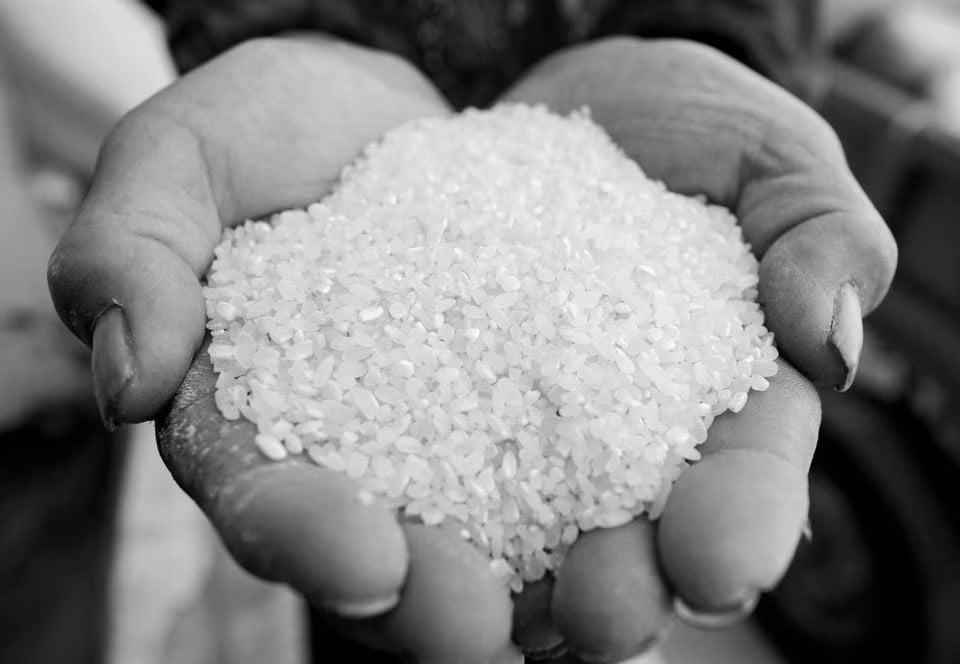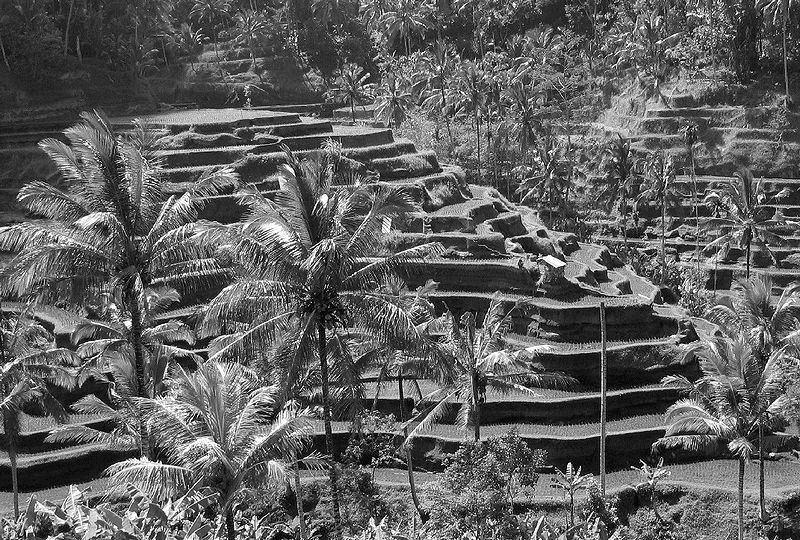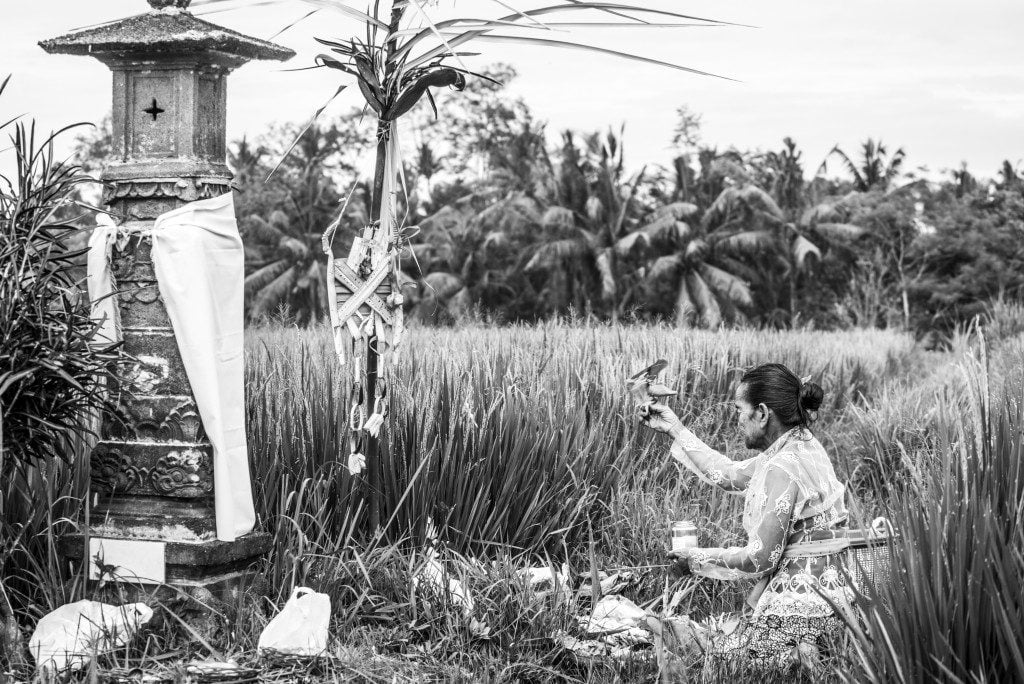While doing a Panchakarma in Kerala, India we witness how Annapurṇa – The kitchen goddess – got a temple in a new kitchen, this ritual is called kumbhabhishekam.
Annapurna (sometimes transliterated as Annapoorna) has to be invited to come into the house temple prepared for her – the murti (icon) of Annapurna has to be placed in the kitchen.
In this Article
“Without proper diet, medicine is of no use, with proper diet, medicine is of no need.”
Ayurvedic proverb
This early morning, I noticed a festive- quasi busy atmosphere, the new kitchen and restaurant are almost ready, only one thing is missing before they can start to cook the meals there, it is the consecration of the kitchen temple – kumbhabhishekam we witness at Udayagiri Cottage.
Annapurna – The kitchen goddess
Annapurṇa is depicted as a youthful goddess with a round face, three eyes, high breasts and four hands. Hindus believe and expect that the Goddess is actually present and conscious in the murti during puja, aware of thoughts and feelings and even sensing the worshiper’s gentle touch on the stone.
‘Anna‘ means food or grains, ‘Purna‘ means full, complete and perfect. Annapurna is considered the goddess of chefs and kitchens and is important for farmers, as she represents fertility of land, harvest and rice.
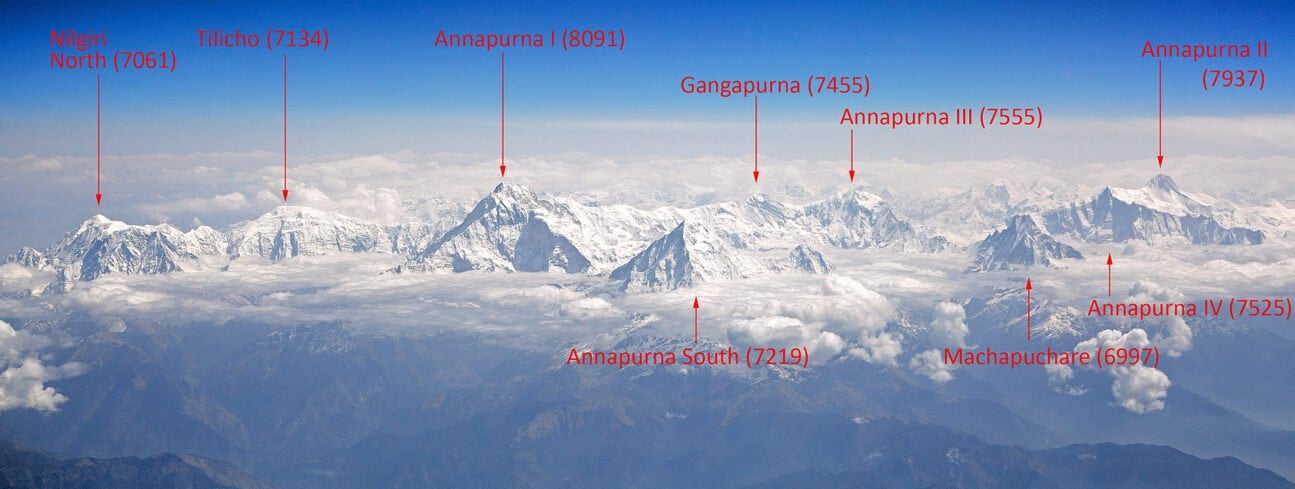
Devotees who worship Annapurna are thought to be blessed with prosperity and health. Women worship Annapurna Devi for a good married life. They also perform the Pooja for their children’s health and growth.
The goddess herself has many other names or epithets – one thousand according to the Annapurna Sahasranam – which include ‘She who is the grantor of knowledge’, ‘She who is the supreme welfare’ and ‘She who gives nourishment’.
MYTHS: Annapurna and Maya
There is an interesting myth involving Lord Shiva and Goddess Annapūrṇā, which explains that even Moksha – (salvation) is not possible on an empty stomach, here the Puranic Myth:
Maya is illusion
Parvati was told by her consort Shiva that the world is an illusion and that food is a part of this illusion called māyā. To demonstrate the importance of food, she disappeared from the world. Her disappearance brought time to a standstill and the earth became barren.
There was no food to be found anywhere, and all the beings suffered from the pangs of hunger. Seeing all the suffering, Parvati reappeared, Shiva ran to her and presented his bowl in alms, saying, “Now I realize that the material world, like the spirit, cannot be dismissed as an illusion.” Parvati smiled and fed Shiva with her own hands.
Since, Parvati is worshiped as Annapurna, the goddess of Nourishment.
Shiva and Goddess Parvati and the game of dice
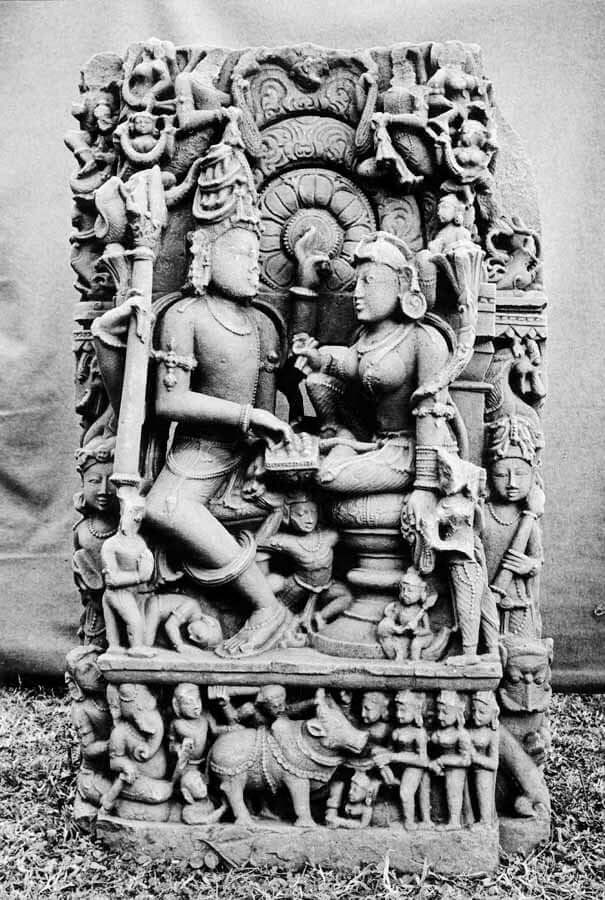
Another variant of the myth:
Lord Shiva and Goddess Parvati used to play the game of dice. Once the game became so interesting that they started betting – Parvati kept her jewels and Shiva his trident.
Shiva lost the game and lost his trident.
To get back his trident, Shiva beted his serpent and this time too, he lost the game.
Finally, when the game ended, Shiva lost all that he had including his bowl.
A humiliated Shiva left for the Deodar forest.
Lord Vishnu approached Shiva and asked him to play again to win back all that he had lost. Taking advice from Vishnu, Shiva played again and won all that he had lost in the previous game.
Goddess Parvati grew suspicious about Shiva’s sudden turn of fortunes and called him a cheat.
This led to a verbal duel between the couple. Finally, Lord Vishnu intervened and revealed that the dice moved as per His wish and they were under the illusion that they were playing.
Symbolically, life is like a game of dice – unpredictable and beyond control.
Verbal duel soon turned to philosophical discussion and Lord Shiva said that possessions are temporary…
everything is Maya – illusion…

even the food we eat is Maya…
Goddess Parvati did not agree that food is illusion.
She argued that if food is illusion, I am also an illusion.
She wanted to know how the world would survive without food and disappeared.
Her disappearance meant Nature came to a stand still. There were no seasonal changes.
Everything remained barren. There was no regeneration or birth. Soon there was severe drought and shortage of food. Shiva realized that he is incomplete without Shakti (dynamic energy that is responsible for creation, maintenance, and destruction of the universe).
Shiva appeared before her with a begging bowl and Goddess Parvati fed Shiva.
Gods, humans and demons all kept praying for food. Goddess Parvati could not see her children perishing out hunger and appeared in Kashi (Varanasi) and started distributing food.
Shiva said that food cannot be dismissed as mere illusion as it is required to nourish the body in which resides the Atma (the universal self, identical with the eternal core of the personality that after death either transmigrates to a new life or attains release (moksha) from the bonds of existence).
Annapoorna symbolizes also the divine aspect of nourishing care.
It is believed, when food is cooked with the spirit of holiness it becomes Amrita which is the Sanskrit word for delicious and healthy food which gives energy to achieve knowledge, enlightenment and immortality.

Annapurna losing her Gauri Rupa
Once Mata (mother) Parvathi had closed all the eyes of the Lord Shiva (three eyes: Sun, Moon and Fire) and entire world was full of darkness.
There was the condition of ‘Pralaya’ – dissolution
Mata Parvati too lost her Gauri Rupa (white color) and asked Lord Shiva for his help in attaining the Gauri Rupa again. She was asked by Lord Shiva to donate anna (food) in Kashi. She hence came in form of Annapurna Devi Rupa with a golden pot and ladle and made anna daan (donate food) in Varanasi. Mata Parvati hence attained the Gauri Rupa again.
It is considered that Her devotees do Annapurna Pooja by donating food in Kashi.
Legend Of Akshaya Tritiya
It is said that when the Lord wanted to create this world, the first word he uttered was – ‘Akshaya’. The scriptures refer to the Akshaya Tritiya day with great reverence, as from Indian mythology it is Annapurna’s birthday:

MYTH: Annapurna’s Birth
Annapurna; is a form of Parvati who feeds the hungry.
Once, Shiva disguised himself as a beggar and approached Parvati for food. On the Akshaya Tritiya day, as Annapurna, she fed Lord Shiva.
This is why it is seen as her birthday. Why should Shiva beg when He is the lord of the Universe?
Shiva’s begging is a symbolic act – he begs for all his beggars.
Kumbhabhishekam Ritual
The charming Swami (honorific title given to an ascetic who has chosen the path of renunciation (sanyāsa), or has been initiated into a religious monastic order of Vaishnavas) with grey beard in his fire orange dhoti has been around the Udayagiri Retreat Center for several days, making sure that everything is in balance for the great event.
He is sharing his knowledge and flute music, we had some very pleasant conversations about Annapurṇa and how to Om (but that is another story).
By listening him playing the Bansuri, and chanting we could get a feeling of the magic surrounding religious celebrations in India.
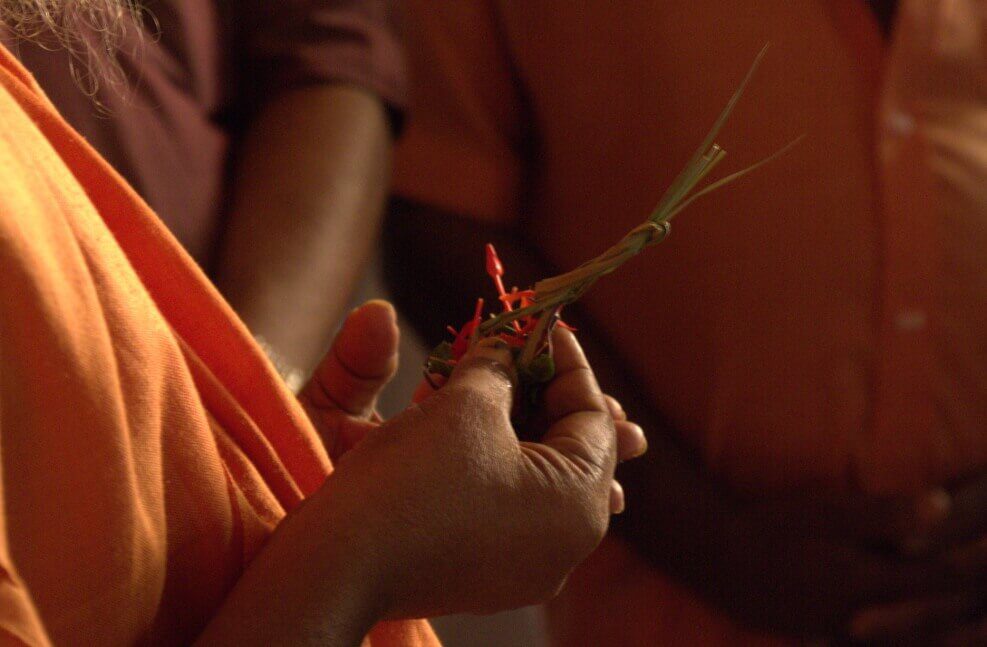
The celebration for the new temple happened on an auspicious Shiva day, it is dedicated to Annapurna, an incarnation of his wife Parvati. This Monday, early morning mandalas were drown, flowers were collected and arranged, and the chefs in the employee kitchen were very busy.
The preparations consumed several hours. By now the family, close friends, neighbors and employees have gathered, the women are especially elegant today, wearing colorful Saris. The holy murti will soon be placed on the altar and everything is ready to begin with the great ceremony.
The ancient ritual we are going to witness is fascinating, the scent of valuable herbs and essence floats through the air, through hand gestures (mudras), ringing bells, shining oil lamps and chanting mantras, the swami beseeches the Deity to come and dwell in the idol, called murti.
Then he offers precious substances to the Deity, including water, milk, holy ash, sandalwood paste and kumkum. There is also a waste banquet of more offerings, all around the shining standing brass oil lamp, called dipastambha.
The offerings include flowers, fruits, herbs, clay pots, rice, grains, legumes, sweet dishes and bottles with precious liquids, they are used for the ritual bath.
Abhishekam
Abhishekam, is performed now, first milk is poured over the Deity, the bath continues with water, sesame oil, turmeric water, saffron water, yogurt, ghee, honey, lime juice, vibhuti, sandalwood water, coconut water and rosewater.
Sri Annapurna Ashtakam- Mantra
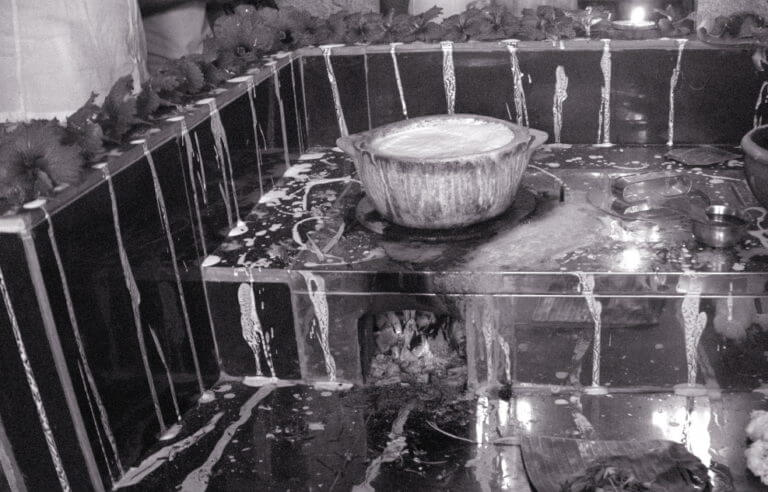
The owner himself had the honor to cook the first time on the new wood fired oven, according to Ayurveda, to maintain the nutrition in food a clay pot has to be used. For the holy celebration the milk was heated until it boiled over and churned with bubbles.
That was the moment everyone was waiting for, now the swami and those present chanted devotional songs and a speech was given. The following mantra (Sri Annapurna Ashtakam) is chanted:
“Oṃ Annapūrṇe sadāpūrṇe Śaṇkara prāṇa vallabhe jñāna vairāgya siddhyartham bhikṣām dehī ca pārvatī.
Māta me Pārvatī devī pitā devo Maheśvara bāndhavāḥ Śiva bhaktāsca svadeśo bhūvanatrayam.”
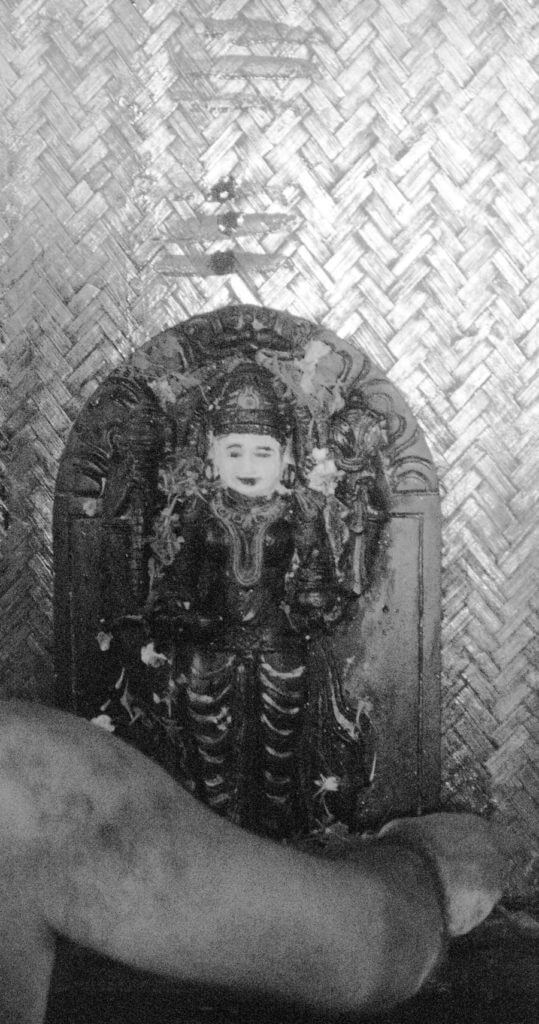
“Oh Annapurna, who is forever complete, more beloved to Lord Shiva than life. Oh Parvati give me the alms of Your grace, to awaken within me spiritual knowledge, inner freedom, prosperity, and spiritual attainment.
My mother is Goddess Parvati, my father is the Supreme Lord Maheshwara (Shiva). My relatives are the devotees of Lord Shiva, wherever they are in the three worlds.”
Now the Deity was dressed in silk-clothes and beautifully decorated with flowers and sandalwood paste. Afterwards the swami and his assistants offered the goddess more incense, flowers and food.
At the high point of the puja, the swami waved a large lamp – (dipa), before the Deity. Accompanied by rhythmical drumbeats and ringing bells Annapurna as for the devotees, is now sending her power through the holy image of herself. The center of that sanctuary, the site of puja, is the murti, now for the devotees mystically tied to the power of Annapurna.
Finally, sacraments such as blessed Ganga-water, , sandalwood paste, flowers and rice and other food were passed out to bless all present.
But no food for us, we need to go to our daily meeting with the ayurvedic doctor. Anyway while doing the Panchakarma we are on a strict diet and would not have been allowed to consume the rich lunch. Or did we get some of the blessing unknowingly?
Annapurna is from now on never missing the ringing of bells, the lighting of lamps, flowers, drumbeats and Sanskrit chants. Daily puja is the axis of ayurvedic life in Udayagiri, food is considered sacred and prayers are offered before consuming it. All food here are fresh, organic and vegetarian and now prepared with Annapurnas blessing.
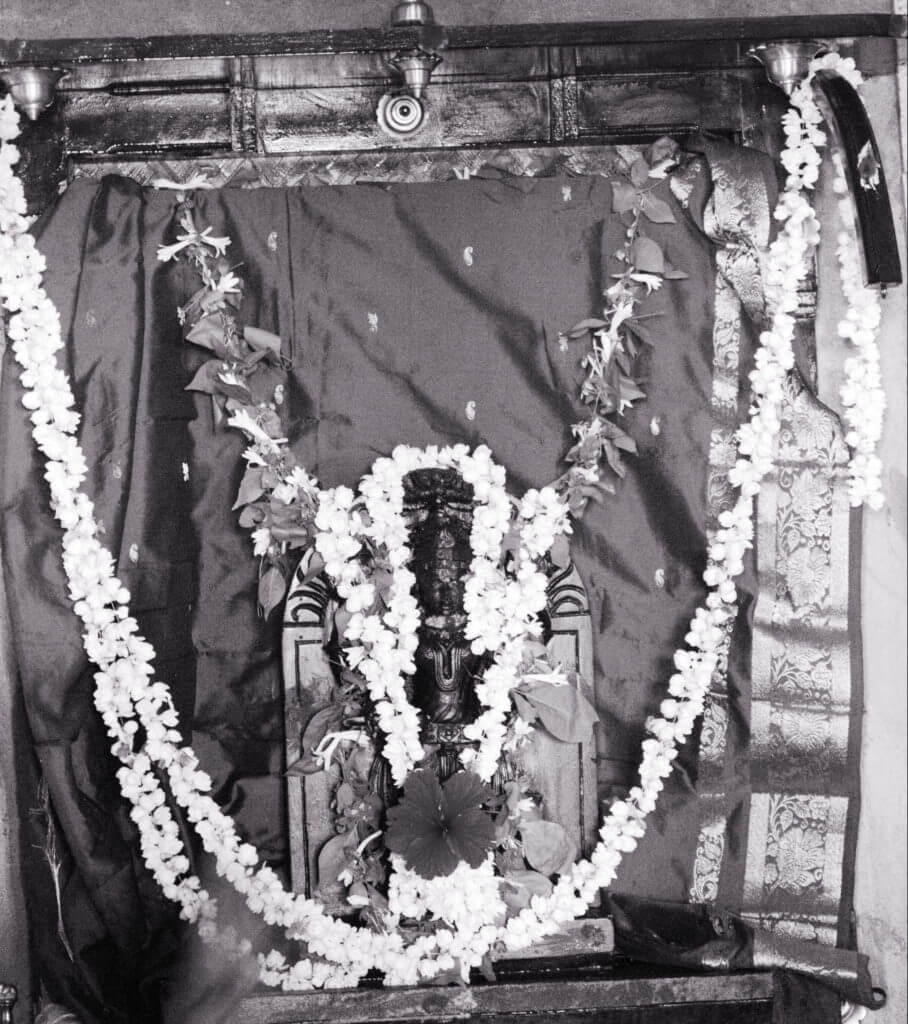
The rituals around food and especially milk and rice showed us, how deep the roots of 5.000 years of Ayurveda are intertwined into Hindu folklife.

The Vedas teach that the universe is made up of five elements (air, fire, water, earth and ether) and each human being is made up of a unique constitution of these elements. When these elements get out of balance the body becomes unhealthy, the teachings say.
“food is medicine”
~ ○ ~
Keep exploring:
Works Cited & Multimedia Sources
- Annapurna Devi Mata. Wikipedia. https://en.wikipedia.org/wiki/Annapurna_Devi_Mata#Legend
- Annapūrṇā – The kitchen goddess
- Annapurna Devi – The goddess of Food and Nourishment – Detechter https://detechter.com
- Goddess Annapurna – Hindu God of Food – Story, Photo, Mantra … https://www.templepurohit.com/goddess-annapurna-the-hindu-god-of-food/
- Goddess Annapurna | True Hindu https://web.archive.org/web/20190814051852/https://sladeviper777.wordpress.com/2014/11/24/goddess-annapurna/
- http://blessingsonthenet.com/indian-festival/article/id/160/legend-of-akshaya-tritiya.
- Udayagiri Cottage, Tholpetty PO, Wayanad. http://www.udayagiriretreat.com/
Udayagiri is a peaceful haven for rare birds, butterflies, wild orchids and herbs. This place is a gift of nature for those who seek quietude, calmness and serenity of the mind.

